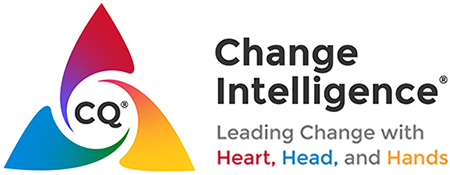Unfortunately, most change-based training programs focus exclusively on “Change Management” and exceedingly few on “Change Leadership.” Change Management is the methods and tools of change: and these are critical to get the job done. Yet, being savvy in deploying a Change Management Toolkit is best viewed as a baseline competency – what we need to be nominally effective at a very basic level. What we need to be optimally impactful is to hone our Change Leadership capacity. As an example, this is the distinction between drafting a Stakeholder Engagement Plan, versus being able to genuinely engage stakeholders at all levels, from the C-suite to the front lines and across functions and geographies.
Think Globally, Act Locally, and Panic Internally
When I train leaders in Change Intelligence, we spend a lot of time diagnosing and developing our strengths, blind spots, and coaching opportunities to enhance our competence and confidence – and reduce our stress and frustration.
Quick example: an IT project manager I coached had the epiphany that emailing a quick reference guide for a new procedural change wasn’t quite enough to encourage adoption by end users (in other words, he provided a training tool that helped the hands, but completely missed the opportunity to show people why the change was necessary from a business sense as well as to engage with them to communicate why they should care). In his words, “maybe it wasn’t them resisting – maybe it was me not leading – who knew?!”
The bottom line message of the CQ/Change Intelligence System is that what so often looks like resistance in others, is a lack of effective leadership behaviors in ourselves. We as change agents are not giving people what they need to “get it” (engaging the brain – the “what and why” – the vision and strategy), to “want it” (inspiring the heart – the “who” – the hopes and fears), or to be able to “do it” (helping the hands – the “how” – the training and tools).
Here are some provocative questions to inspire both your own personal self-reflection as well as coaching conversations with clients on your Change Leadership journey:
- Am I aware of my own emotions in the face of change? Do I deny or explore them? What are they telling me and how can they lead me to the solutions I seek ? How can allowing myself to feel what I feel help evolve me into an even more powerful Change Agent?
- Are the leaders/sponsors of your change initiatives “doing as they say others should do?” Are they catalyzing or crushing commitment? Is there an opportunity for you to have a courageous conversation with a leader you are working with? If so, what would that be? If so, what’s stopping you? What would you do/say if you weren’t afraid?
- People in organizations today are hungering for a sense of humanity – what can you do in your change work to keep the human element at the forefront? Would it be worthwhile to not just create a Stakeholder Plan, but also an Empathy Map delineating change impacts? Is the human element in change being considered at each step and decision-point along the way?
Ready to create powerful and lasting results for your team or organization? Discover your Change Intelligence here.
